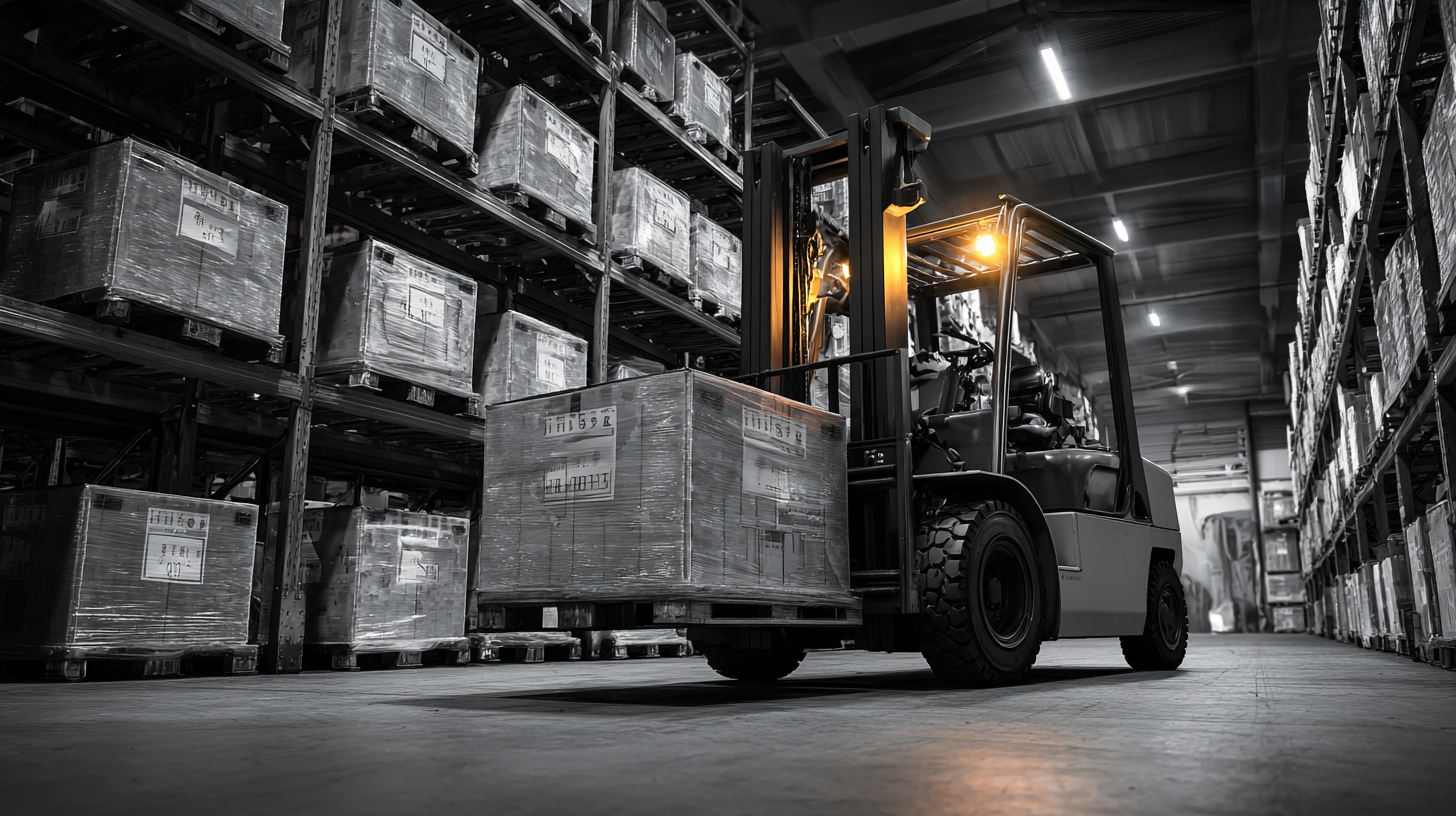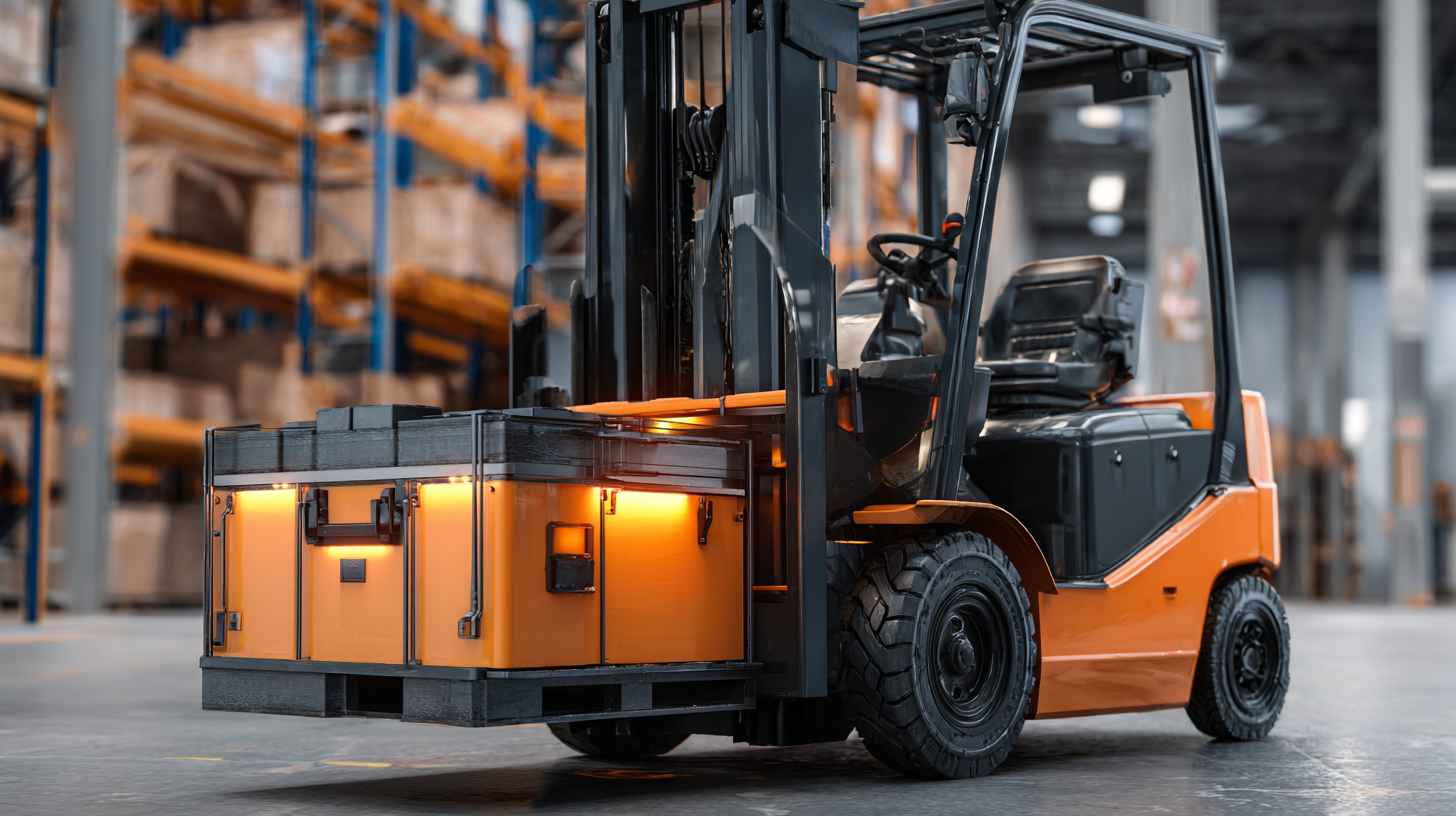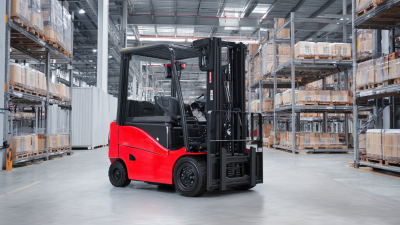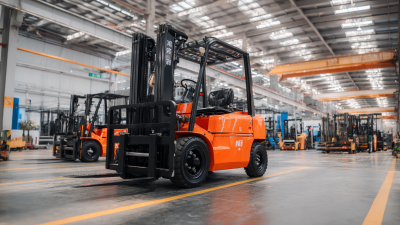Factory Tour
How to Choose the Right Forklift Battery for Optimal Performance and Longevity
 Choosing the right forklift battery is crucial for maximizing both the performance and longevity of your material handling equipment. According to a report by the Industrial Truck Association, the efficiency of a forklift can be significantly influenced by its power source, with battery selection affecting operational costs and productivity levels. In fact, a properly matched forklift battery can enhance energy efficiency by up to 20%, thereby reducing the total cost of ownership. Additionally, understanding the specific requirements of your forklift and the nature of your operations can lead to optimal performance and a reduced risk of downtime. As the demand for effective and sustainable warehouse solutions grows, making informed choices about Forklift Battery specifications, such as amp-hour ratings and charging cycles, becomes essential for ensuring that your investment aligns with operational demands.
Choosing the right forklift battery is crucial for maximizing both the performance and longevity of your material handling equipment. According to a report by the Industrial Truck Association, the efficiency of a forklift can be significantly influenced by its power source, with battery selection affecting operational costs and productivity levels. In fact, a properly matched forklift battery can enhance energy efficiency by up to 20%, thereby reducing the total cost of ownership. Additionally, understanding the specific requirements of your forklift and the nature of your operations can lead to optimal performance and a reduced risk of downtime. As the demand for effective and sustainable warehouse solutions grows, making informed choices about Forklift Battery specifications, such as amp-hour ratings and charging cycles, becomes essential for ensuring that your investment aligns with operational demands.
Understanding Different Types of Forklift Batteries and Their Applications
When choosing the right forklift battery, it's crucial to understand the different types available and their specific applications. The forklift battery market is currently dominated by lead-acid batteries, which account for a significant portion due to their cost-effectiveness and reliability in various operating conditions. However, the lithium-ion battery segment is witnessing substantial growth, with forecasts indicating a rise from a market size valued at approximately USD 503.89 million in 2024, expected to expand significantly by 2034. Lithium-ion batteries offer advantages such as higher energy density and faster charging times, making them increasingly attractive for modern warehouse and industrial applications.
Furthermore, as the industry shifts towards sustainability, the dilemma of forklift battery reuse versus recycling is coming to the forefront. While second-life applications for forklift batteries are increasingly discussed, insights suggest the market is currently stalling due to challenges in processing and consumer perception. With effective cell balancing techniques and optimal designs being developed, the potential for these batteries to be used beyond their initial applications may unlock new market opportunities. Thus, making an informed choice on forklift batteries not only enhances performance and longevity but also aligns with emerging trends in energy efficiency and sustainability.

Evaluating Battery Capacity and Runtime for Efficient Operations
When selecting a forklift battery, evaluating battery capacity and runtime is crucial for ensuring efficient operations. According to a report from the Industrial Truck Association, the average runtime of a lead-acid forklift battery is about 5-8 hours under standard operating conditions. However, runtime can significantly vary based on the battery’s capacity and the specific demands of daily operations. For instance, a battery with a higher amp-hour (Ah) rating delivers prolonged use, accommodating busy shifts without frequent recharges.
Moreover, understanding the relationship between battery capacity and application is essential. A study by the Battery University indicates that for heavy-duty cycles, such as in warehousing and logistics, a nickel-cadmium (NiCd) battery might offer better durability and less performance degradation than a standard lead-acid battery. With a lifespan of up to 2,000 cycles, this type of battery is an excellent choice for operations needing consistent power. Thus, evaluating both capacity and intended use can lead to optimal performance and longevity, minimizing operational costs and enhancing productivity.
Forklift Battery Capacity and Runtime Analysis
This chart compares the battery capacity and runtime of different types of forklift batteries. Lead-Acid batteries offer 150 Ah with 6 hours of runtime, while Lithium-Ion batteries provide greater capacity at 200 Ah and longer runtime of 8 hours. Nickel-Cadmium batteries have a lower capacity of 100 Ah and a shorter runtime of 4 hours.
Considering Environmental Factors Affecting Battery Performance
When selecting the right forklift battery, it is vital to consider environmental factors that can significantly affect performance and longevity. Temperature fluctuations and humidity levels play a crucial role in the operational efficiency of battery systems. For instance, extreme heat can lead to accelerated aging and decreased energy storage capacity, while excessive cold can hinder chemical reactions, reducing overall power output. Understanding these environmental influences can guide operators in implementing appropriate storage and maintenance strategies to prolong battery life.
Furthermore, advancements in lithium-ion battery technology have emphasized the importance of addressing environmental effects. Research has shown that the aging process of batteries is exacerbated by certain external conditions, such as elevated temperatures and unfavorable humidity. As industry trends towards more sustainable energy solutions, the choice of battery type, including newer technologies like solid-state batteries, may offer improved resilience to environmental stresses. Incorporating these considerations into the selection process can help optimize the performance of forklift systems and ensure they meet operational demands efficiently.
Budgeting for Initial Costs and Long-Term Maintenance of Forklift Batteries
When selecting a forklift battery, it’s essential to consider not only the initial acquisition cost but also the long-term maintenance expenses. The upfront investment in a quality battery can significantly affect overall operational efficiency. Opt for batteries with extended warranties and proven durability records, as these can indicate better performance over time, leading to cost savings.
**Tips:** Always calculate the total cost of ownership, which includes not just the purchase price but also the expected lifespan and maintenance needs. Investing in a higher-quality battery may require a more considerable initial outlay, but the reduction in maintenance and replacement costs can make it a smarter long-term choice.
Additionally, regular maintenance is vital to prolonging the life of your forklift battery. This includes routine checks, proper charging practices, and regular cleaning. Neglecting these aspects can lead to premature battery failure and increased replacement costs.
**Tips:** Implement a maintenance schedule and train staff on best practices for battery care. This proactive approach can enhance battery performance and optimize your investment, ensuring that your forklift operations remain efficient and cost-effective.
How to Choose the Right Forklift Battery for Optimal Performance and Longevity
| Battery Type | Voltage (V) | Capacity (Ah) | Estimated Cost ($) | Average Lifespan (Years) | Maintenance Frequency (Months) |
|---|---|---|---|---|---|
| Lead-Acid | 12 | 600 | 1500 | 5 | 6 |
| Lithium-Ion | 24 | 500 | 4000 | 8 | 12 |
| Gel Cell | 12 | 450 | 1800 | 6 | 8 |
| Absorbent Glass Mat (AGM) | 12 | 600 | 2000 | 7 | 6 |
Assessing Charging Options and Their Impact on Battery Longevity
 When selecting a forklift battery, understanding the impact of various charging options on battery longevity is crucial. According to industry reports, improper charging practices can reduce battery lifespan by up to 30%. For instance, using a fast-charging method without considering the battery's state can lead to overheating and decreased performance. It's essential to match the charger specifications with the battery type to ensure optimal charging efficiency and longevity.
When selecting a forklift battery, understanding the impact of various charging options on battery longevity is crucial. According to industry reports, improper charging practices can reduce battery lifespan by up to 30%. For instance, using a fast-charging method without considering the battery's state can lead to overheating and decreased performance. It's essential to match the charger specifications with the battery type to ensure optimal charging efficiency and longevity.
Tips: Always monitor the battery temperature during charging, as excessive heat is detrimental. Incorporating a charging schedule that allows for complete discharges before recharging can also enhance battery lifespan. Additionally, utilizing smart chargers equipped with temperature compensation features can further optimize charging processes.
Moreover, the charging environment plays a significant role in battery health. Reports suggest that charging in a well-ventilated area can significantly decrease the risk of thermal runaway. Regular maintenance checks on the battery and charging equipment can identify potential issues early, preventing costly repairs and extending the battery's life. By adopting these practices, businesses can ensure their forklift batteries operate at peak performance for a longer duration.
Related Posts
-

7 Essential Forklift Battery Tips Every Global Buyer Should Know
-

Essential Forklift Battery Maintenance Checklist for Optimal Performance
-

Revolutionizing Efficiency: The Rise of China's Best Forklift Battery in Global Markets
-

Precision Engineering in China Elevates the Best 48v 300ah Forklift Battery for Global Service
-

Exploring Innovative Alternatives for 80v Forklift Battery Solutions
-

2025 Technology Trends Shaping the Future of Best 51.2v Lifepo4 Boat Batteries






